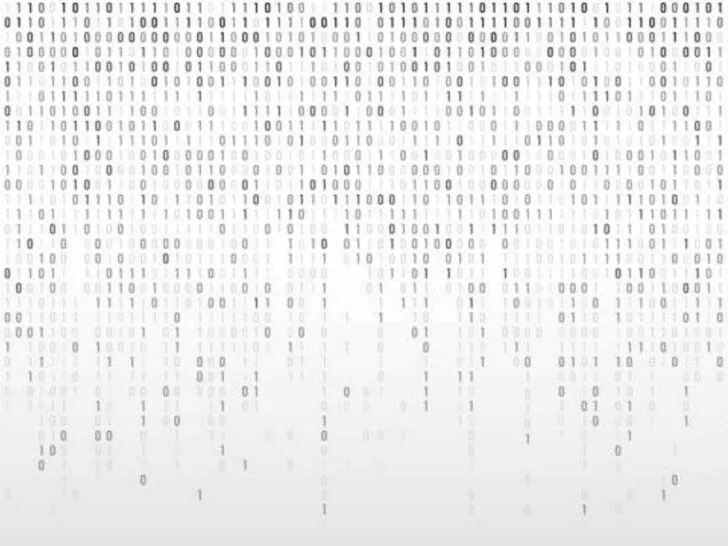Do you sometimes feel lost when trying to understand the difference between sequential and event-driven programming? You’re not alone. As the world is rapidly pacing towards technology programming has become an east part of our day-to-day lives. So knowing about these terms is only going to benefit in the long run.
A brief answer to our question is, in sequential programming, instructions are written in the order of their execution whereas event-driven programming is based on the occurrence of events like a mouse click. By the end of this blog post, you will have a clear understanding of the differences between sequential and event-driven programming, so let’s increase our knowledge.
What is Sequential Programming?
Sequential programming is a type of programming that follows a predetermined order. It is a method of programming where instructions are executed one after another in a specific order.
This type of programming is also known as linear programming because instructions are executed in the same order in which they are written.

In sequential programming, instructions are executed from the top of the code to the bottom. This means that instructions at the top of the code must be executed before instructions at the bottom of the code. This type of programming is typically used in programs that require the same sequence of instructions to be executed for each input.
Sequential programming is relatively simple to understand and work with. It is a good choice for beginners to learn how to program as it allows them to focus on the logic of the code and not worry about branching or looping.
Sequential programming is also beneficial for creating simple programs with few lines of code. This can make it easier to identify errors in the code and make debugging simpler.
Overall, sequential programming is a good choice for basic programming tasks. It is simple and straightforward and does not require the programmer to understand complex branching or looping techniques.
Advantages and disadvantages of sequential programming
Sequential programming is a type of programming that follows a predetermined order or sequence. This programming style is often used to create a simple, linear flow of instructions that are easy to follow and understand. It can be used to create an automated system that follows a set of instructions without any user intervention.
| Advantages | Disadvantages |
| Simplicity and low learning curve. | Inflexibility. |
| It is easy to understand and debug, and it allows for rapid development. | It is difficult to modify a program once it has been written, and it is hard to integrate new features. |
| It is also reliable, as there are fewer opportunities for errors or unintended consequences. | It can also be difficult to debug and can be inefficient when it comes to running multiple programs at the same time. |
| Additionally, it can be used to automate repetitive tasks and increase efficiency. | Additionally, it is not well suited for complex problem-solving. |
Overall, sequential programming is a logical and straightforward approach for simple applications or tasks. It is simple to learn and efficient for short tasks, but its inflexibility makes it less suitable for more complex systems.
What is event-driven programming?
Event-driven programming is a programming paradigm in which the flow of the program is determined by events such as user actions (mouse clicks, key presses), sensor outputs, or messages from other programs or threads. It is also known as event-based programming or reactive programming.

Event-driven programming is often used in graphical user interfaces (GUIs) to enable user interaction. When a user interacts with an element on the screen, an event is triggered that causes a certain action to happen. For example, a user clicking a button can cause an event that executes a certain code.
Event-driven programming often relies on callbacks, which are functions that are called when an event occurs. A callback is usually defined outside the main program and is triggered when the event occurs. Event-driven programming is different from sequential programming, which is a top-down approach that executes instructions in a pre-defined sequence. In event-driven programming, the program flow is determined by events, rather than instructions.
Event-driven programming can be used to create responsive applications that react quickly to user input. It is also well-suited for distributed applications because events can be sent from one process to another. A more in-depth analysis of event-driven programming is given in the following video:
Advantages and disadvantages of event-driven programming
Event-driven programming is a type of programming paradigm that is based on user actions or events. It is commonly used in user interface design and game development. Event-driven programming is often used in web programming where user actions are detected and certain actions are then followed.
Advantages:
- Event-driven programming is great for creating interactive user interfaces. It allows for a lot of flexibility in terms of user interaction and response.
- Event-driven programming can also be more efficient than some other programming paradigms. This is because it allows the program to respond to user input as soon as it is received, rather than waiting for a specific set of instructions.
- Event-driven programming can also be useful for large-scale projects where many different features need to be integrated. It allows the code to be broken down into smaller, more manageable chunks, which makes the code easier to maintain.
Disadvantages:
- Event-driven programming can be difficult to debug because of the large number of user interactions that can occur. It can be difficult to trace the flow of execution and pinpoint the issue.
Comparison of sequential and event-driven programming
Sequential and event-driven programming are two different types of programming paradigms. Let’s compare the two graphically.
| Sequential Programming | Event-driven programming |
| In sequential programming, code is executed line by line in a step-by-step manner. | Event-driven programming, on the other hand, is based on the occurrence of events. |
| This type of programming is typically used for tasks that require a set of instructions to be executed in a specific order. | It is used to trigger a certain action when a particular event occurs, such as a user interaction or a system notification. |
| Sequential programming is often used to create long, complex programs that require data processing or calculations. Executing code in a step-by-step manner allows for certain types of repetitive tasks to be automated. | Event-driven programming is generally used for shorter and simpler programs that are designed to respond to user input or events. It is often used in graphical user interfaces and web applications, where it is important to respond quickly to user actions. |
| Sequential programming is generally easier to debug since it is easier to identify errors and follow the execution path. | In contrast, event-driven programming can be more difficult to debug since it is not always easy to determine what events were triggered and in what order. |

Both sequential and event-driven programming have different strengths and weaknesses, therefore, enabling the users to choose between them as per their requirements.
Real-life examples of sequential and event-driven programming
- When a user clicks a button in a graphical user interface (GUI), the associated event will be triggered and the associated task will be executed using event-based programming.
- A web browser uses event-driven programming to respond to user inputs, such as clicking links.
- A game console may employ both sequential and event-driven programming to respond quickly to user inputs
Choosing the right approach for your project
Understanding the differences between the two approaches of programming and the potential benefits of each, are key to choosing the right approach for your project.
Sequential programming is the process of writing code in the order that operations should be performed. This means that operations occur in a rigid order and must be performed one after the other. This approach is easier to understand and debug, as the code is laid out in a logical step-by-step sequence.
Event-driven programming, on the other hand, is more flexible, as it allows the program to respond to events and triggers. This type of programming is more suitable for dynamic and interactive applications, as it allows for more user control. As the user interacts with the application, events are triggered and code is executed as needed.
When deciding on the right approach for your project, consider the intended purpose of the project, the complexity, and the expected user experience. If you are building a static website or a command-line application, then sequential programming is likely the best approach
Future trends in programming
The future of programming is ever-evolving and increasingly complex. With the ever-growing number of programming languages, frameworks, and tools, programming is becoming more flexible and powerful.
One of the biggest trends in programming is the move towards event-driven programming. This type of programming is used to develop applications that respond to user input, allowing for more dynamic and interactive experiences. Event-driven programming is becoming more popular due to its ability to create more complex experiences than traditional sequential programming.
In addition, the Internet of Things (IoT) is rapidly gaining traction and has the potential to revolutionize programming. IoT enables devices to communicate with each other, allowing for the development of powerful applications and services. Programming for the IoT requires a different set of skills, such as network programming and hardware integration, and the ability to create applications and services that work in real-time.
Finally, artificial intelligence is becoming more prevalent and is being used to automate processes, create simulations, and solve complex problems. As AI continues to evolve, programming for it will become increasingly important. This will require developers to learn new skills and tools, such as neural networks, deep learning, and machine learning
FAQs
What is the difference between sequential and event-driven programming?
The main difference between sequential and event-driven programming is the order in which instructions are executed. Sequential programming follows instructions in a linear sequence, while event-driven programming responds to user events such as mouse clicks, key presses, and messages from the operating system.
What types of programs can be written using sequential programming?
Sequential programming is best suited for programs that need to follow a specific set of instructions, such as scientific calculations, video and audio processing, and image manipulation.
What types of programs can be written using event-driven programming?
Event-driven programming is best suited for user interfaces, such as web applications and mobile apps. Event-driven programming allows the user to interact with the application in a more intuitive way by responding to user events.
What are the advantages of event-driven programming?
Event-driven programming allows for more intuitive user interfaces, as well as a greater degree of flexibility and customization
Conclusion
- In conclusion, sequential programming and event-driven programming are two distinct styles of computer programming.
- Sequential programming is a linear style of programming in which instructions are executed consecutively.
- Event-driven programming, however, is a non-linear style of programming in which instructions are triggered by external events.
- Both programming styles are used for a variety of applications, and the best style to use depends on the particular project requirements.
Other Articles
- What’s The Difference Between 2GB And 4GB Graphics Cards? (Which One Is Better?)
- Wireless Repeater vs. Wireless Bridge (Comparison of Two Networking Items)
- Perceptible Differences Between The Sound Quality Of 192 And 320 Kbps MP3 Files

